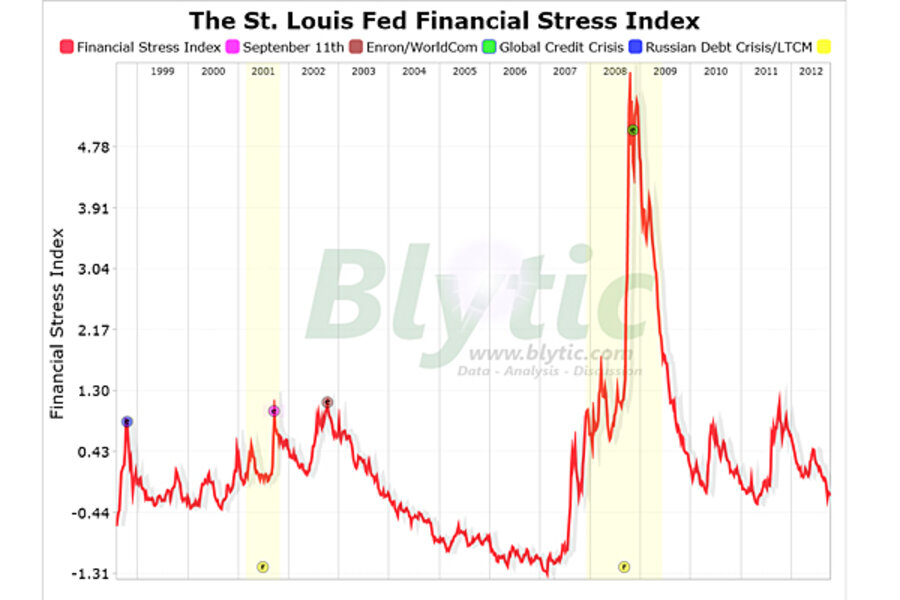Financial stress remains high in October
Loading...
The Federal Reserve Bank of St. Louis recently began publishing a new weekly index that seeks to track the general level of financial stress.
As periods of financial stress come and go a whole host of fundamental economic indicators immediately adjust to meet the near and long term expectations of market participants.
Interest rates, yields spreads, popular market volatility indices all move in real time giving observers unequivocal evidence of changes general sentiment.
The St. Louis Fed has devised a method of crunching eighteen of these sensitive indices down into one convenient index it calls the St. Louis Fed Financial Stress Index (STLFSI).
The latest results of the STLFSI indicate that the level of financial stress remains elevated with October's results at -.20, a level roughly equivalent to the immediate recovery period following the tech-wreck.





